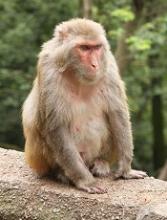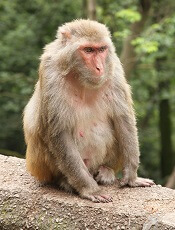User login
A 2-drug combination sets a new standard for prevention of acute graft-versus-host disease (GVHD), according to an author of a new study.
The combination—sirolimus and KY1005—completely protected nonhuman primates from acute GVHD and significantly prolonged survival in the animals.
The combination controlled the expansion of effector T cells (Teffs) while augmenting the proportion of regulatory T cells (Tregs) in the primates’ bloodstreams, allowing transplanted stem cells to reconstitute the animals’ immune systems.
Researchers reported these results in Science Translational Medicine. The work was funded by Kymab, the company developing KY1005.
“KY1005, in combination with sirolimus, sets a new standard for [acute] GVHD prevention,” said study author Leslie Kean, MD, PhD, of Seattle Children’s Research Institute in Washington.
“These results in the complex and clinically relevant animal model suggest this regimen is an exceptional candidate for clinical translation.”
Dr Kean and her colleagues noted that no existing treatments for GVHD can successfully strike the delicate balance between controlling Teffs and maintaining the protective function of Tregs.
So the team decided to combine 2 treatments that partially suppress Teffs—sirolimus and KY1005, a monoclonal antibody that blocks a T-cell receptor ligand called OX40L.
The researchers tested the combination in rhesus macaques undergoing allogeneic hematopoietic stem cell transplant (HSCT). The team compared the combination to each agent alone, as well as to no prophylaxis.
KY1005 was given at a dose of 10 mg/kg, starting 2 days before HSCT and continuing once weekly until planned discontinuation on day 54. Sirolimus was given daily for the entire study period as an intramuscular formulation, with doses adjusted to achieve a serum trough concentration of 5 to 15 ng/mL.
Animals treated with both sirolimus and KY1005 survived—free from GVHD—for more than 100 days after HSCT, which was significantly longer than any other group (P<0.01).
In comparison, untreated animals succumbed to GVHD within 8 days of HSCT. And the median GVHD-free survival times were 14 days for the sirolimus group and 19.5 days for the KY1005 group.
The researchers also noted that untreated animals experienced “a rapid decline” in Tregs over the study period. They had a significant decrease in the ratio of Tregs to conventional T cells (Tconv)—2.0 ± 0.4 before HSCT and 0.6 ± 0.1 at last analysis (P<0.001).
When given alone, both KY1005 and sirolimus protected animals from this drop in the Treg/Tconv ratio.
But the combination regimen significantly augmented the Treg/Tconv ratio—1.30 ± 0.30 before HSCT and 1.82 ± 0.43 at last analysis (P<0.05).
Because sirolimus is already used as GVHD prophylaxis and KY1005 is in phase 1 testing as a psoriasis treatment, the researchers believe the combination is a strong candidate for clinical testing. ![]()
A 2-drug combination sets a new standard for prevention of acute graft-versus-host disease (GVHD), according to an author of a new study.
The combination—sirolimus and KY1005—completely protected nonhuman primates from acute GVHD and significantly prolonged survival in the animals.
The combination controlled the expansion of effector T cells (Teffs) while augmenting the proportion of regulatory T cells (Tregs) in the primates’ bloodstreams, allowing transplanted stem cells to reconstitute the animals’ immune systems.
Researchers reported these results in Science Translational Medicine. The work was funded by Kymab, the company developing KY1005.
“KY1005, in combination with sirolimus, sets a new standard for [acute] GVHD prevention,” said study author Leslie Kean, MD, PhD, of Seattle Children’s Research Institute in Washington.
“These results in the complex and clinically relevant animal model suggest this regimen is an exceptional candidate for clinical translation.”
Dr Kean and her colleagues noted that no existing treatments for GVHD can successfully strike the delicate balance between controlling Teffs and maintaining the protective function of Tregs.
So the team decided to combine 2 treatments that partially suppress Teffs—sirolimus and KY1005, a monoclonal antibody that blocks a T-cell receptor ligand called OX40L.
The researchers tested the combination in rhesus macaques undergoing allogeneic hematopoietic stem cell transplant (HSCT). The team compared the combination to each agent alone, as well as to no prophylaxis.
KY1005 was given at a dose of 10 mg/kg, starting 2 days before HSCT and continuing once weekly until planned discontinuation on day 54. Sirolimus was given daily for the entire study period as an intramuscular formulation, with doses adjusted to achieve a serum trough concentration of 5 to 15 ng/mL.
Animals treated with both sirolimus and KY1005 survived—free from GVHD—for more than 100 days after HSCT, which was significantly longer than any other group (P<0.01).
In comparison, untreated animals succumbed to GVHD within 8 days of HSCT. And the median GVHD-free survival times were 14 days for the sirolimus group and 19.5 days for the KY1005 group.
The researchers also noted that untreated animals experienced “a rapid decline” in Tregs over the study period. They had a significant decrease in the ratio of Tregs to conventional T cells (Tconv)—2.0 ± 0.4 before HSCT and 0.6 ± 0.1 at last analysis (P<0.001).
When given alone, both KY1005 and sirolimus protected animals from this drop in the Treg/Tconv ratio.
But the combination regimen significantly augmented the Treg/Tconv ratio—1.30 ± 0.30 before HSCT and 1.82 ± 0.43 at last analysis (P<0.05).
Because sirolimus is already used as GVHD prophylaxis and KY1005 is in phase 1 testing as a psoriasis treatment, the researchers believe the combination is a strong candidate for clinical testing. ![]()
A 2-drug combination sets a new standard for prevention of acute graft-versus-host disease (GVHD), according to an author of a new study.
The combination—sirolimus and KY1005—completely protected nonhuman primates from acute GVHD and significantly prolonged survival in the animals.
The combination controlled the expansion of effector T cells (Teffs) while augmenting the proportion of regulatory T cells (Tregs) in the primates’ bloodstreams, allowing transplanted stem cells to reconstitute the animals’ immune systems.
Researchers reported these results in Science Translational Medicine. The work was funded by Kymab, the company developing KY1005.
“KY1005, in combination with sirolimus, sets a new standard for [acute] GVHD prevention,” said study author Leslie Kean, MD, PhD, of Seattle Children’s Research Institute in Washington.
“These results in the complex and clinically relevant animal model suggest this regimen is an exceptional candidate for clinical translation.”
Dr Kean and her colleagues noted that no existing treatments for GVHD can successfully strike the delicate balance between controlling Teffs and maintaining the protective function of Tregs.
So the team decided to combine 2 treatments that partially suppress Teffs—sirolimus and KY1005, a monoclonal antibody that blocks a T-cell receptor ligand called OX40L.
The researchers tested the combination in rhesus macaques undergoing allogeneic hematopoietic stem cell transplant (HSCT). The team compared the combination to each agent alone, as well as to no prophylaxis.
KY1005 was given at a dose of 10 mg/kg, starting 2 days before HSCT and continuing once weekly until planned discontinuation on day 54. Sirolimus was given daily for the entire study period as an intramuscular formulation, with doses adjusted to achieve a serum trough concentration of 5 to 15 ng/mL.
Animals treated with both sirolimus and KY1005 survived—free from GVHD—for more than 100 days after HSCT, which was significantly longer than any other group (P<0.01).
In comparison, untreated animals succumbed to GVHD within 8 days of HSCT. And the median GVHD-free survival times were 14 days for the sirolimus group and 19.5 days for the KY1005 group.
The researchers also noted that untreated animals experienced “a rapid decline” in Tregs over the study period. They had a significant decrease in the ratio of Tregs to conventional T cells (Tconv)—2.0 ± 0.4 before HSCT and 0.6 ± 0.1 at last analysis (P<0.001).
When given alone, both KY1005 and sirolimus protected animals from this drop in the Treg/Tconv ratio.
But the combination regimen significantly augmented the Treg/Tconv ratio—1.30 ± 0.30 before HSCT and 1.82 ± 0.43 at last analysis (P<0.05).
Because sirolimus is already used as GVHD prophylaxis and KY1005 is in phase 1 testing as a psoriasis treatment, the researchers believe the combination is a strong candidate for clinical testing. ![]()

